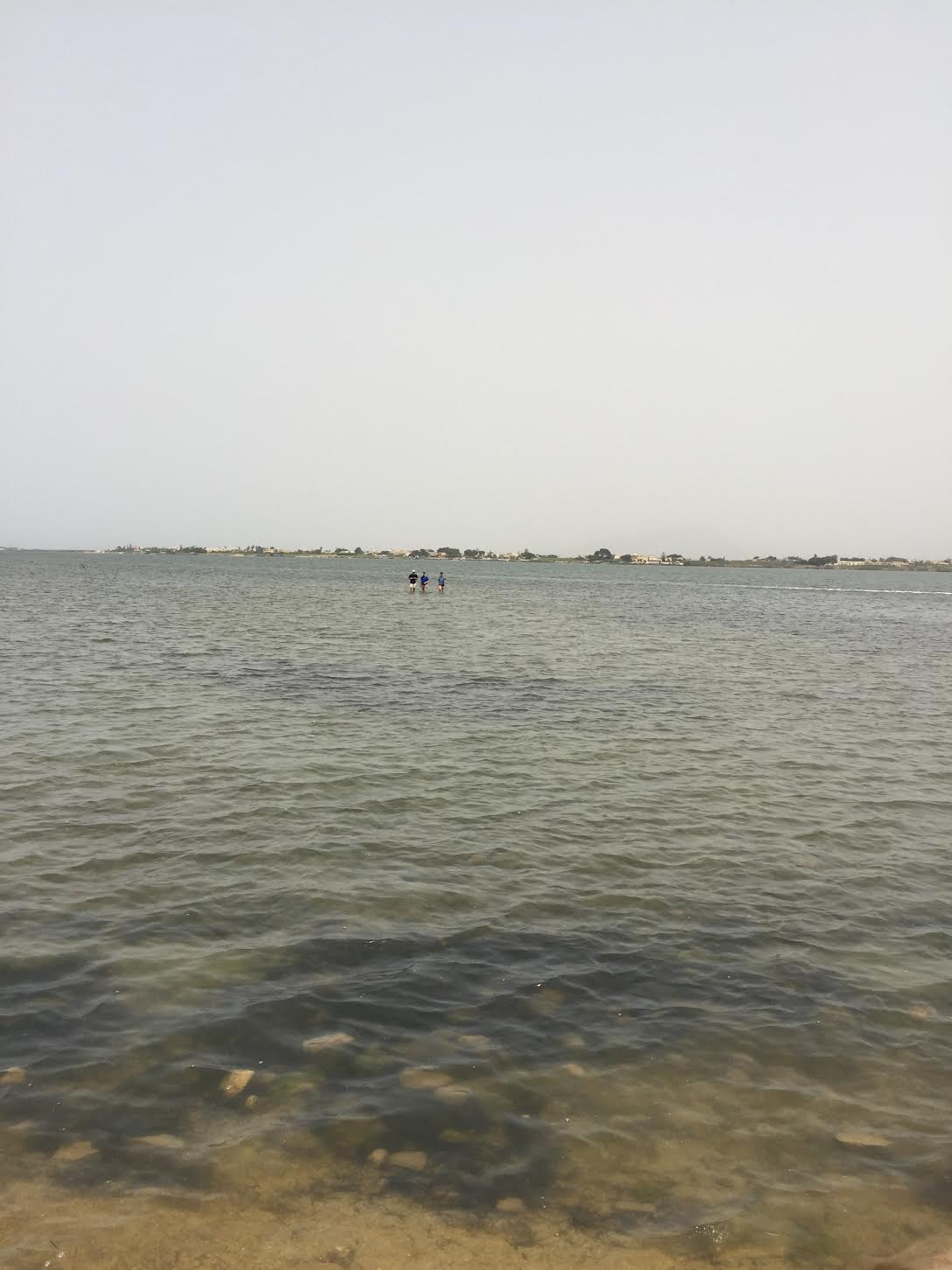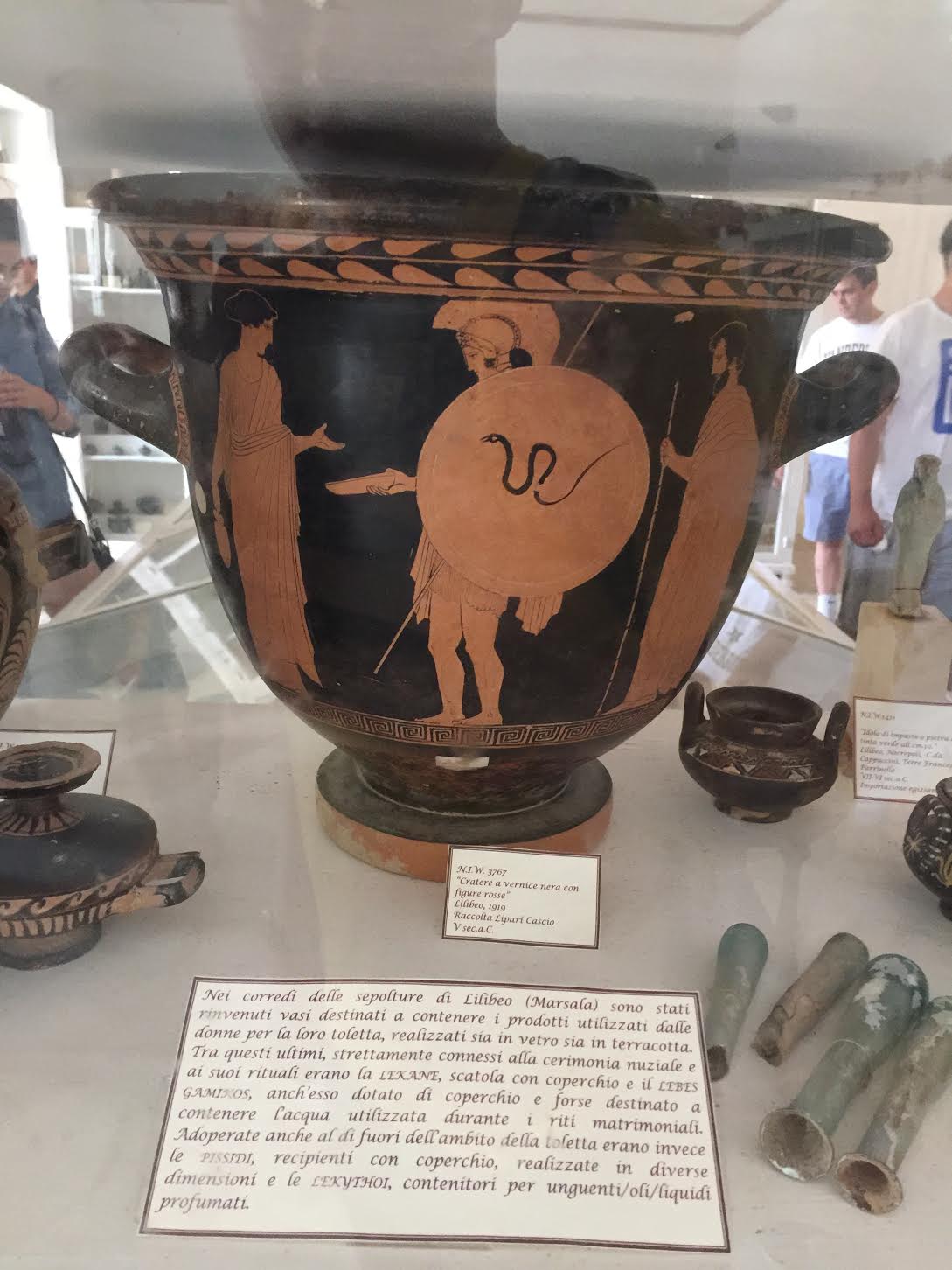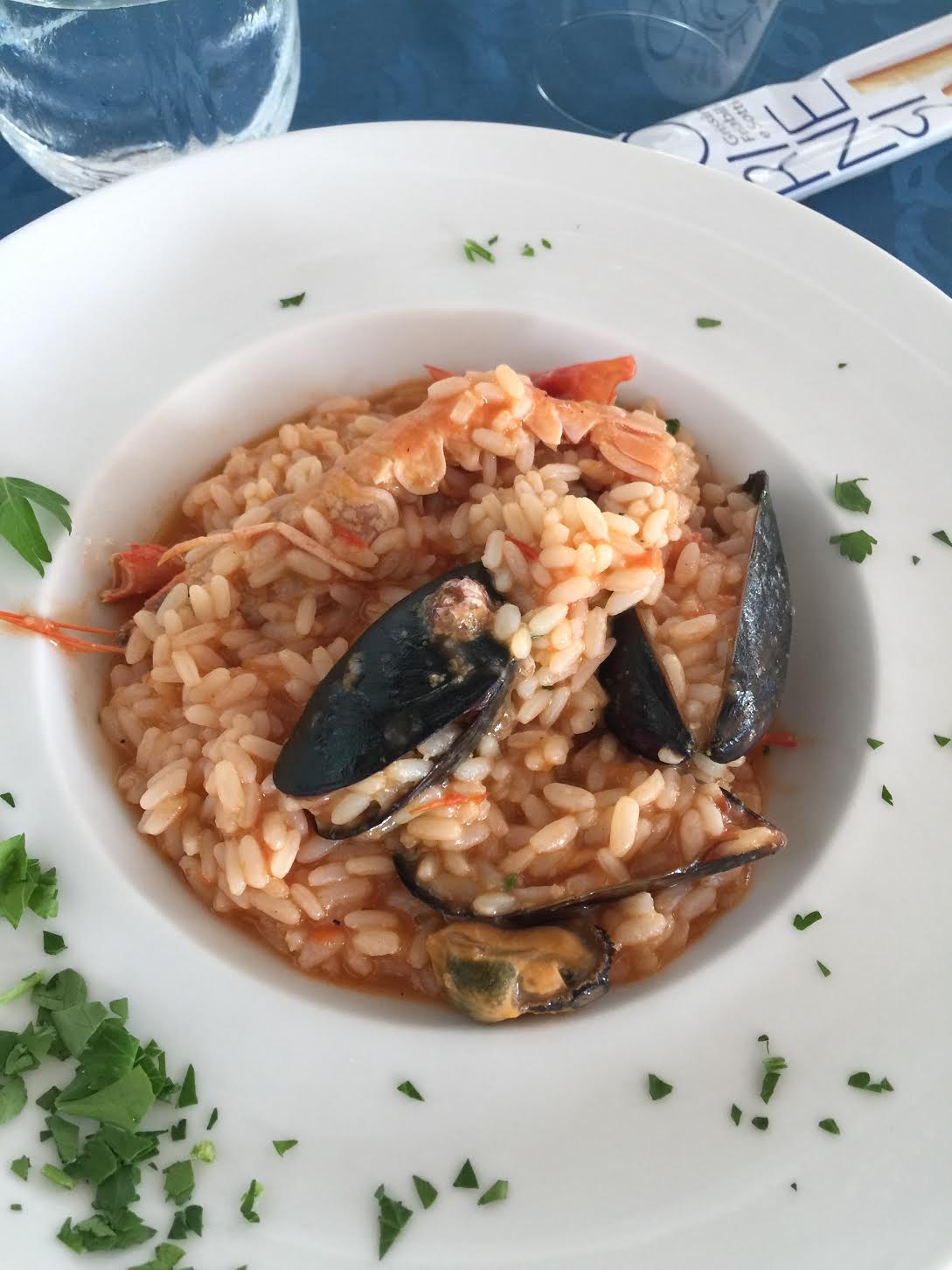Home » 2017 Blog post » Our trip to the Ancient Phoenician City Mozia
Our trip to the Ancient Phoenician City Mozia
Posted by matthewd on Saturday, May 13, 2017 in 2017 Blog post.
Our second field trip of the maymester begun with a journey to Mozia, a small but very influential Phoenician city located on an island off of the coast of western Sicily. In order to get there, we took a 3-hour bus ride from Cefalù and a 10-minute ferry ride to the island. My first impression was that the island was quite small for such an important city, but it turns out that this was an advantage to the Phoenicians as it made it easier to defend. During our tour, we saw ancient Phoenician ruins that may date back as old as the eighth century BC, including old buildings and burial sites. The “graveyard,” which is pictured, was very interesting because you could see ceramic pots where the Phoenicians put dead animal and child remains into prior to burial. Additionally, we saw what looks like a port, but what scholars now believe to be a religious site. This, along with other sites that we have seen, sheds light on how important religion was to ancient Mediterranean civilizations. I knew that it was important prior to the trip, but seeing the ruins has put into perspective just how much time and effort was put into worshipping their gods.
Also on the island, we got to see Grillo grape vines which Vittoria pointed out were excavated from original Grillo seeds found on the island. I also learned that these grape vines were about 2 years old and at least 1 year away from being able to be harvested. I had no idea that it took that long to grow grapes for wine.
My favorite part of our trip to Mozia was seeing the causeway, a now underwater road that allowed the Phoenicians to traverse the lagoon to mainland Sicily without having to use a boat. The causeway is still traversed today, and a few bold Maymester students actually walked about 30 meters out.
Our trip to Mozia concluded with a visit to a museum and lunch. The museum had a beautiful statue that was thought to have been traded for from Greece. The museum had a bunch of other artifacts as well, including old weapons and a lot of pottery. What surprised me the most about the museum was how you were actually able to touch many things, and how little security there was. This is very different than in the US, and I believe it captures a general sentiment in Sicily that people can be trusted more so than they can be in the US.
After a multi-course seafood risotto and tuna steak lunch, we left Mozia and headed for Segesta. Unlike in the US, this lunch was much bigger. Our trip to Mozia gave me first-hand experience of just how advanced and elaborate the Phoenicians were for being over 2,500 years old. The Phoenicians are only one of the few civilizations that colonized Sicily, and I am excited to learn more about them and others, such as the Greeks and Romans, and how their lasting impacts can be seen in Sicilian culture today.







©2024 Vanderbilt University ·
Site Development: University Web Communications